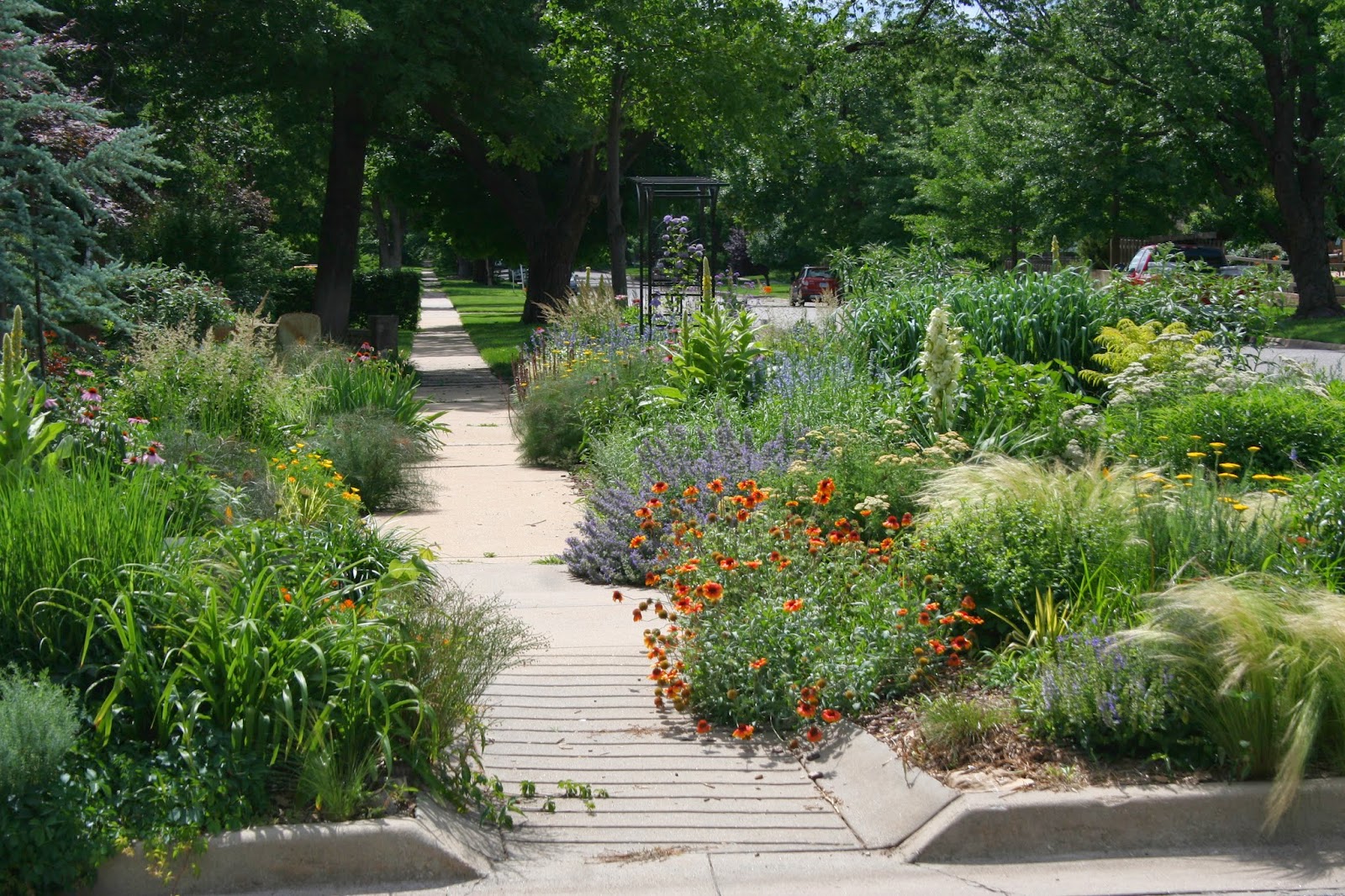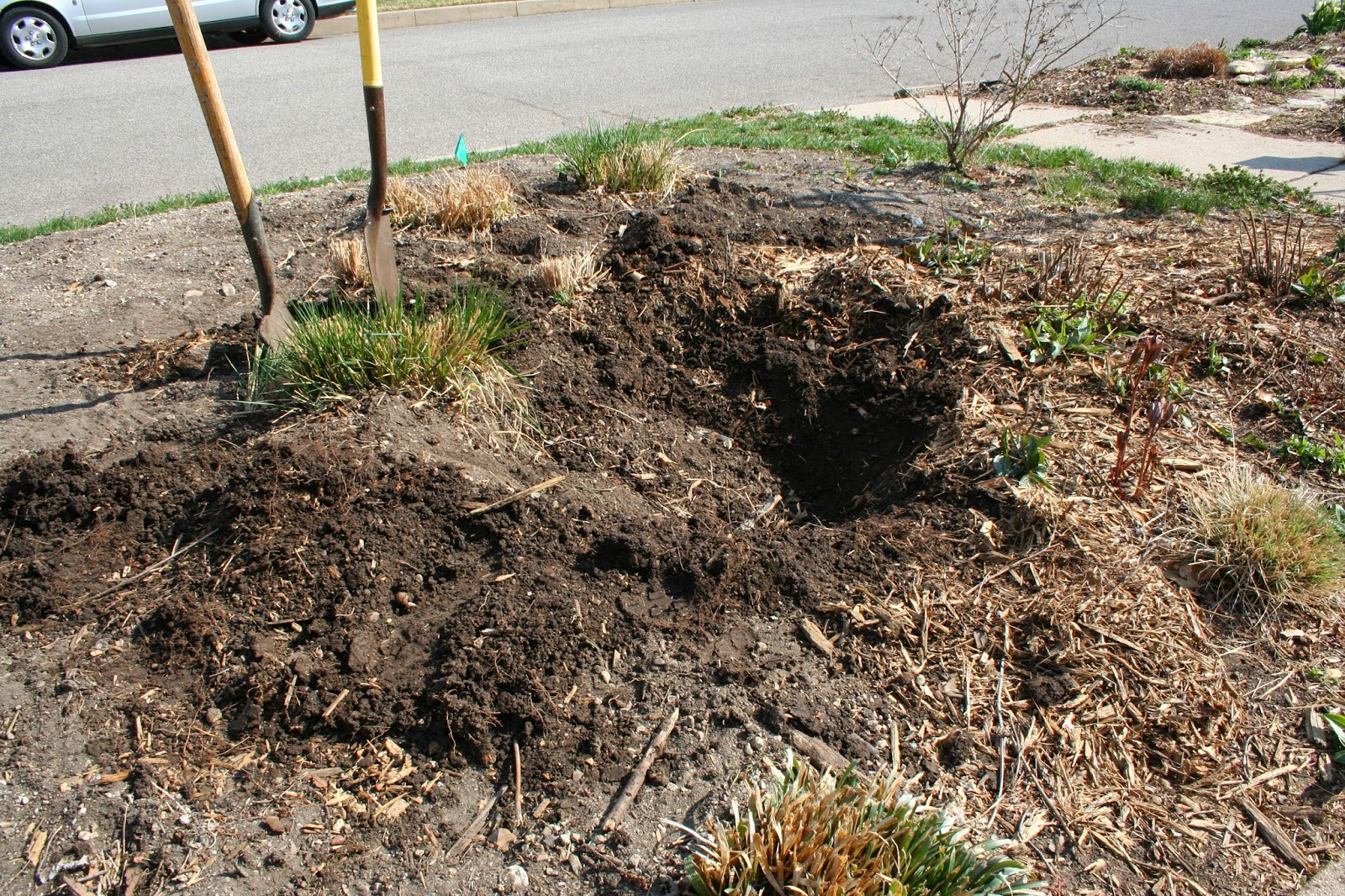Hmmm.....doesn't look too abnormally large.
That's a pretty normal size of things.
That's a little more on the maximum size.
Bam! Yes, that's maximum. 9-10' Tall! Yes these plants are taller than the stop sign! whoops. They are impressive, however they are a little large and 'weedy' looking for me and for my small piece of property. The plant? Helianthus maximiliani -Maximilian Sunflower. I planted some by seed two years ago in a eastern exposure and the plants stayed pretty confined with late season interest that I enjoyed. This spring many seedlings were popping up every where including these plants which I allowed to grow while removing many more nearby. The size of the plant and texture of the foliage mixed in with the similar foliage of Western Ironweed created a combination that really isn't pleasant to the eye and they bloom so late.
It looks like a glob and most of the foliage has been eaten by lacebugs. So most of these are gone as I write this. I left a colony near the house and one plant on the right.
The blooms are impressive and the bees and ants love them.
This is Kansas you know.
More to come!


















































